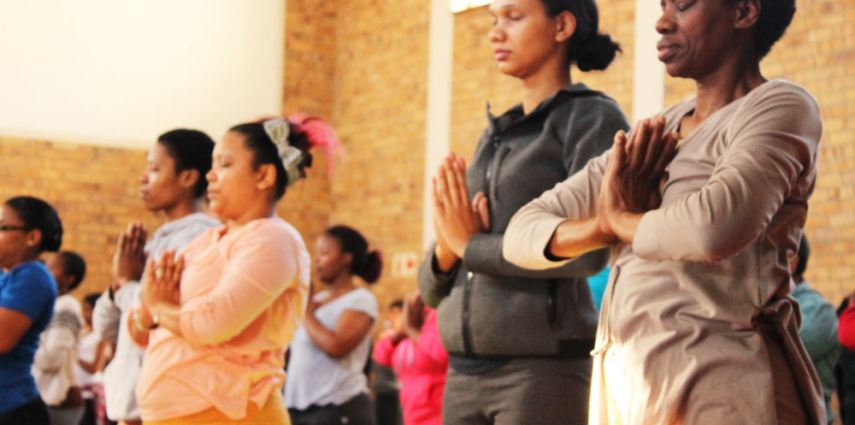Emma Seppala was working as an intern at The International Herald Tribune (the past iteration of The International New York Times) one summer in college in Paris, shuttling between the newsroom writers and editors on the second floor and the workers at printing presses in the basement.
Ms. Seppala, the science director at the Stanford Center for Compassion and Altruism Research and Education, mulls the difference between the two starkly different atmospheres in her 2016 book “The Happiness Track”: One floor was raucous and full of laughter, the other floor was solemn and quiet. Can you guess which one she enjoyed being in more?
It was the press workers who had a sideboard covered with wine, cheeses and bread. They were vibrant, Ms. Seppala writes. “I believe most of us want to be like the French press workers: we want to do a good job no matter what that job might be — and we also want to be happy doing it.”
She later notes, “We have simply accepted overextension as a way of life.”
In today’s era of workplace burnout, achieving a simpatico work-life relationship seems practically out of reach. Being tired, ambivalent, stressed, cynical and overextended has become a normal part of a working professional life. The General Social Survey of 2016, a nationwide survey that since 1972 has tracked the attitudes and behaviors of American society, found that 50 percent of respondents are consistently exhausted because of work, compared with 18 percent two decades ago.
Where once the term burnout was applied exclusively to health care workers, police officers, firefighters, paramedics or social workers who deal with trauma and human services — think Graham Greene’s novel “A Burnt-Out Case,” about a doctor in the Belgian Congo, a book that gave rise to the term colloquially — the term has since expanded to workers who are now part of a more connected, hyperactive and overcompensating work force.
But occupational burnout goes beyond needing a simple vacation or a family retreat, and many experts, psychologists and institutions, including the Centers for Disease Control and Prevention, highlight long-term and unresolvable burnout as not a symptom but rather a major health concern. (Though it does not appear in the Diagnostic and Statistical Manual of Mental Disorders, which outlines psychiatric disorders, it does appear in the International Statistical Classification of Diseases and Related Health Problems, a classification used by the World Health Organization.)
“We’re shooting ourselves in the foot,” Ms. Seppala told me. “Biologically we are not meant to be in that high-stress mode all the time. We got lost in this idea that the only way to be productive is to be on the go-go-go mode.”
It is difficult to identify burnout, which often feels like surrender or failure rather than what it really is: a chronic disease.
Common Work Stressors
• Overcoming challenges associated with new software, changing atmospheres or different processes
• Unrealistic deadlines
• Frequent scheduling conflicts or interruptions
• Unpredictable schedules
• Physical demands like exposure to weather or heavy lifting
• Added responsibility beyond the initial scope of one’s role while not being compensated for the supervision
• Interpersonal demands such as interactions with colleagues or customers
These stressors can manifest in outbursts against co-workers, violence or anger toward loved ones at home, loss of appetite and passion for things once loved, or being unable to find motivation for things that you were able to accomplish with ease.
The pioneering researcher behind the study of burnout since the 1970s, Christina Maslach, professor emerita of psychology at the University of California, Berkeley, conducted a study that concluded there are three major signs of workplace burnout.
Signs of Burnout to Watch For
According to Dr. Maslach’s study, common signs of burnout include:
• Feeling emotionally drained and mentally unwell. Nausea. Being unable to sleep or constantly fighting sicknesses like head colds.
• Feeling alienated by your colleagues and bosses, feeling constantly underappreciated, or feeling ostracized by them.
• Feeling you are not personally achieving your best, or regularly “phoning it in.”
“There are a lot of things that can happen when people begin to have this problem at work,” Dr. Maslach said. “There are things like absenteeism, turnover, but also things in terms of errors, not being careful about the work they’re doing. We see a lot of difficulty with people getting along with each other — angry, aggressive.”
In 1981, Dr. Maslach and her colleagues devised the “Maslach Burnout Inventory.” It is still used today to determine whether an employee is experiencing burnout that may be causing performance or personal issues.
“Stress phenomenon can take a toll in terms of physical health, which can then get tied into absenteeism. There are a number of ways in which the quality of the work goes down as a result of burnout,” she said.
If anyone complains about it, she said, they’re automatically labeled a wimp.
“Quite honestly in America we glorify stress,” Dr. Maslach said. “And that’s another thing that leads people to be quiet and shut up about some of the stressors they’re facing because they don’t want to be viewed about not doing their best.”
Ways to Combat Burnout at Work
If you’re suffering from burnout at work, or if any of those symptoms sound familiar to you, there are a few things you can do now, before you get some time off to recover. (Although you should definitely consider some time off to recover, if you can.)
• Focused breathing, which can tap into your parasympathetic nervous system to help you reduce or manage stress.
• Frequent breaks, preferably five-minute breaks for every 20 minutes spent on a single task, or sitting at your desk
• Ergonomic chairs and desks, like a sit-stand arrangement, or even a small plant in your office space.
• A trusted mentor at work with whom you can discuss and strategize other ways to deal with work-related issues.
• A hobby outside of work through which you can decompress, de-stress and dissociate from work. It doesn’t have to be anything specific, but regular exercise or another fitness activity works wonders here, and has benefits beyond stress relief.
If you have the ability to work remotely, that’s another great way to add stress-reducers to your life. Periodically working out of the office enables you to try working from a quiet and contemplative space in which creativity may grow. It could also allow for more time outdoors. But broadly speaking, Dr. Maslach said, it is the human connection that’s most effective at combating burnout.
“What we found is that people’s health, well-being, everything in life, is way better if you’re connected with other people,” she said. “That social network, that each of you have each other’s back, that they’re there for you and you’re there for them, that’s like money in the bank. That’s a precious, precious resource.”
Jason Lang is the team leader of Workplace Health Programs within the C.D.C. He says that aside from good diet, exercise and sleep, there’s one surefire way to combat general malaise, job dissatisfaction, low morale and burnout.
“Laughter,” he said. “Find some humor in daily life.”
From: The New York Times



